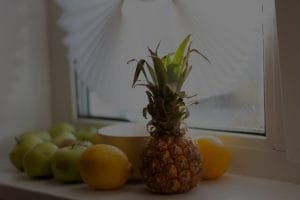**Unlocking Harmony: Mastering the Placement of Feng Shui Energy Ornaments in Your Home**
**Abstract:** Discover the art of placing Feng Shui energy ornaments to enhance the flow of positive energy in your home. This guide offers practical tips to create a harmonious living space.
Understanding Feng Shui Principles
Feng Shui, an ancient Chinese practice, focuses on the arrangement of space to promote balance and harmony. The core belief is that our surroundings significantly influence our well-being. By strategically placing energy ornaments, we can enhance the flow of positive energy, or “chi,” throughout our homes. Understanding the principles of Feng Shui is essential for creating an environment that nurtures and supports our lives.
Identifying Key Areas in Your Home
Before placing energy ornaments, identify key areas in your home that correspond to different aspects of life, such as wealth, relationships, and health. The Bagua map, a Feng Shui tool, can help you visualize these areas. For instance, the southeast corner represents prosperity, while the southwest corner is linked to love and relationships. By understanding these zones, you can focus on areas that need energy enhancement, ensuring a balanced flow of chi throughout your living space.
Selecting the Right Energy Ornaments
Choosing the right energy ornaments is crucial for achieving optimal flow. Popular Feng Shui ornaments include crystals, statues, and plants, each serving a unique purpose. For example, amethyst promotes tranquility, while a wealth bowl filled with coins attracts abundance. When selecting ornaments, consider their symbolism and how they resonate with your personal goals. This connection will deepen the impact of the energy ornaments in your home.
Placement Strategies for Maximum Impact
Placement is key in Feng Shui. To maximize the effectiveness of your energy ornaments, consider the following strategies. First, avoid clutter, as it obstructs the flow of chi. Ensure that your ornaments are easily visible and accessible, allowing their energy to radiate throughout the space. Additionally, place ornaments at eye level to create a focal point that draws attention and invites positive energy into your home.
Creating Balance with Color and Material
Color and material play significant roles in Feng Shui. Each color corresponds to different energies and emotions. For instance, red symbolizes passion and vitality, while blue represents calmness and clarity. When incorporating energy ornaments, choose colors that align with the desired energy of the space. Similarly, consider the materials used in your ornaments; wood promotes growth, metal enhances clarity, and earth elements provide stability. This thoughtful approach fosters a balanced and harmonious environment.
Seasonal Adjustments for Continued Flow
Feng Shui is not static; it evolves with the seasons. Regularly reassess your energy ornaments to ensure they align with current energies. For instance, in spring, introduce fresh flowers and vibrant colors to symbolize renewal. In winter, incorporate warm hues and grounding elements to promote coziness. By adjusting your ornaments seasonally, you maintain a dynamic flow of energy that resonates with the changing cycles of life.
Personalizing Your Space with Intention
Finally, remember that Feng Shui is deeply personal. Infuse your space with ornaments that reflect your unique journey and aspirations. Whether it’s a family heirloom or a travel souvenir, personal touches enhance the energy of your home. Set intentions for each ornament, visualizing the energy you wish to attract. This practice not only creates a vibrant living space but also empowers you to manifest your dreams.
By mastering the placement of Feng Shui energy ornaments, you can cultivate a harmonious home that supports your well-being and enhances the flow of positive energy. Embrace these practices to transform your living space into a sanctuary of balance and abundance.










